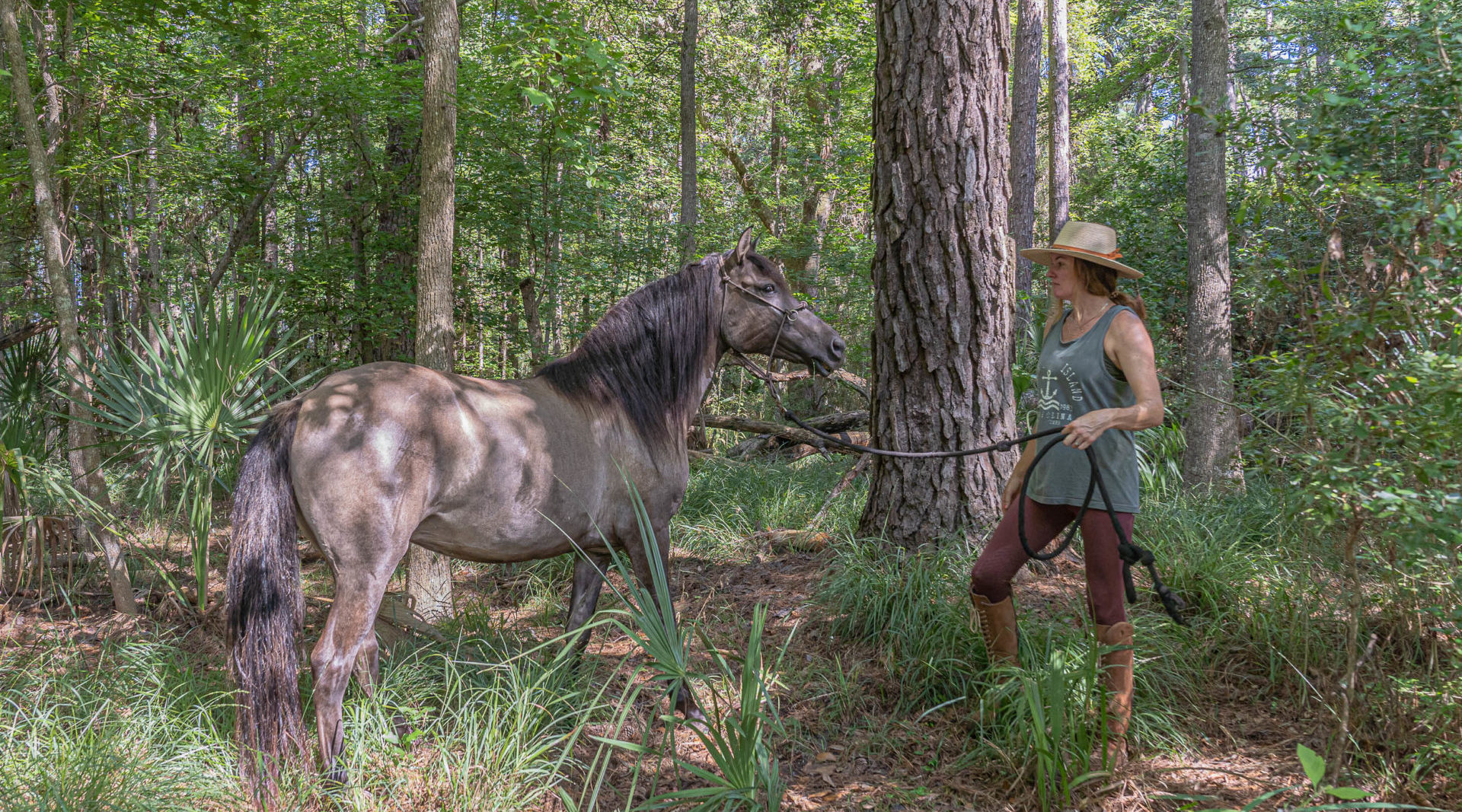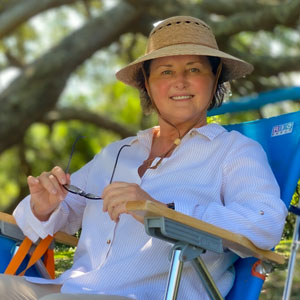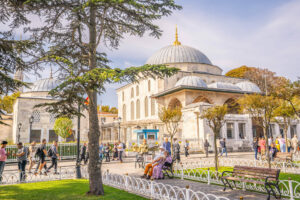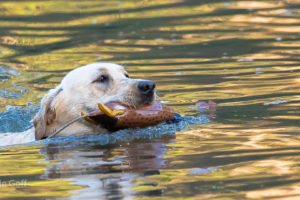“No Bridge = No Problem!” It’s what makes Daufuskie Island So Unique.
We walked out of the cottage onto the tiny porch and into the yard. Not long after sunset, the Daufuskie night thrust us into pitch-black darkness. On queue, cicadas, a harbinger of late summer in the south, began buzzing louder and louder until they reached a deafening crescendo. Then we looked up and saw thousands of stars twinkling above. Daufuskie’s Island’s isolation makes it one of the best places in South Carolina for stargazing. There are no traffic or city lights. Many residents believe a bridge would signal the end of peaceful, uncluttered solitude. Hence, their slogan: “No bridge = no problem! ” It’s what makes Daufuskie Island so unique!

Eddie and I visited Daufuskie Island to take pictures of the Marsh Tacky, South Carolina’s official state heritage horse. We found the rare Marsh Tacky horses and so much more!
Marsh Tacky’s history and survival on the island make Daufuskie Island unique!
Erika Viet is the founder and director of the Daufuskie Marsh Tacky Society. Before traveling, I contacted Erica to arrange a photo session with the horses. The possibility of us getting together seemed doomed. I was out of reach between the first conversation and the scheduled date, and in the meantime, the Marsh Tacky Society had closed temporarily for renovations. Undaunted, I called Daufuskie Trail Rides. They sent a message to Erika, and she invited me to take pictures the following morning as she groomed and fed the horses.
When we arrived at the Marsh Tacky Society, two horses moved casually to a shelter and peered at us from the open top of a Dutch door. As we walked closer, they turned sideways to get a better look. They were picture-perfect in the window as if accustomed to greeting people there.
While grooming the horses, Erica explained the history of the marsh tacky and the mission of the Daufuskie Marsh Tacky Society, a nonprofit 501c3.
“The mission of the Marsh Tacky Society is to promote and protect the endangered Marsh Tacky horse in the context of its historical roots on Daufuskie Island through breeding, training, and sales, plus education and special events.” – Daufuskie Marsh Tacky Society.
We learned that Marsh Tacky horses like Flaca and yearling Clover are rare. There could be as few as 400 worldwide. They arrived on the shores of the Carolinas with Spanish explorers as early as the 16th century. Over the years, the horses adapted to the Sea Islands’ marshy and swampy terrain and humid subtropical climate. Early settlers, Native Americans, and Gullah Islanders used the Marsh Tacky; each family likely had at least two. The versatile horses did everything from pulling a plow and rounding up cattle to transporting people and goods. As modern development encroached on the islands, the Marsh Tacky disappeared. Today, the Livestock Conservancy and the Equus Survival Trust list the Marsh Tacky as critically endangered.
Erica walked Flaca to the edge of the forest, explaining more. As I photographed the horses, the words regal, dignified, and intelligent came to my mind. Tacky comes from the English word “common” or “cheap.” It sounds belittling, but it means that all people used them for all purposes in 16th-18th Century South Carolina. Frances Marion, “Swamp Fox” of the American Revolution, comes to mind. The Marsh Tacky carried the Patriots to victory through the marshes and swamps of South Carolina.
I noticed Flaca eyeing me cautiously and then looking back to Erica for confirmation that everything was ok. Then, she began enjoying a treat of fresh greens from the tree branches.
Hundreds of years in the Lowcountry marshland shaped a more petite but sure-footed and durable horse with a gait called the Marsh Tacky Trot.
Getting Around Daufuskie Island
Dirt roads demand a slower pace, and our quiet electric golf carts allowed us to form immediate friendships. We met Barbara, Mary, Angela, and Linda on the road and toured the Island together, with one golf cart behind the other.
Adding to our experience of the Gullah culture, our tour companion Barbara gave us a sample of the Gullah dialect that she learned as an interpreter in the medical field.
Gullah is an English-based Creole language that originated in the 18th century among African Americans in coastal regions of the U.S. Georgians call it Geechee and Sea Island Creole. Today, it is rare to hear, except in documentaries and interviews. Its unique grammar, pitch, and sentence structure make it a musical sound. To hear Barbara speak Gullah was an awe-inspiring highlight of our trip.
Another thing that makes Daufuskie Island so unique is that it gives you that going-back-in-time feeling, and there is a long list of historic places to see.
Much history is packed into an island five miles long and 2.5 miles wide. With so much Gullah heritage and Civil War history, the entire Island is a historic district on the National Register for Historic Places. A Palmetto Trust for Historic Preservations grant restored many Gullah homes and other structures. The “Rob Kennedy Trail” provides a comprehensive, easy-to-use guide to 20 must-see places. Tabby Ruin is an example of building materials used in the Island’s early history, such as ground oyster shells, sand, and water.
Mount Carmel Baptist Church (Billy Burn Museum) captures the history of Daufuskie Island from pre-colonial days through the mid-20th century and even earlier. Artifacts show that people may have inhabited the small island as long as 9,000 years ago! However, the endearing Gullah people leave the most lasting legacy. Descendants of Africans enslaved on rice, indigo, and cotton plantations, the Gullahs maintained their unique cultural identity. After the American Civil War, they farmed, logged, and harvested oysters, making the islands their own.
“Approximately one-quarter of the 400 full-time residents of the isle are Gullah. Many left after the oyster business went bust in the 1950s due to outside pollution of the waters. The Gullah dialect is the only distinct African Creole language in the U.S.” – S.C. Lowcountry and Resort Islands. 7 August 2020. The Gullah-speaking people are what makes Daufuskie Island so unique!
American author Pat Conroy taught at the Mary Fields School and wrote about it in his 1972 book The Water is Wide. Daufuskie Blues, an indigo textile store, occupies the school now. Planters once grew as much indigo as rice in South Carolina. Following tradition, store owner Rhonda showed us how early colonists dyed indigo for textiles.
I conjured images of a young Pat Conroy with mutton chops and his students huddled closely around him as he intrigued them with tales of the world beyond the Islands.
As we headed into the First Union African Baptist Church, what a surprise! Sallie Ann Robinson came down the steps singing, clapping, and leading a tour group. In the book, Sallie Ann inspired Conroy’s Daufuskie Island student, Ethel. She is a sixth-generation island native, now an accomplished chef, cookbook author, and cultural conservationist. She is also an island tour master at Tour Daufuskie. We saw her again at Melrose Landing as we were leaving. She stood beside her tour bus, waiting to enchant another group of visitors. Tour Guide Sally Ann Robinson is what makes Daufuskie Island so unique. See the Daufuskie Island Virtual Tour with Sally Ann Robinson.
Our new friends led us on a singing experience as we exited the church!
The Daufuskie Praise House is a museum beside the First Union African Baptist Church. It provides a more spiritual history of the Gullah people.
Bloody Point Beach
The beach’s secluded feeling makes Daufuskie Island unique! Only one other person was there at sunrise. The beach got its macabre name from the skirmishes between the Yemassee Indians and settlers. During the Yemassee War (1715-1717), “blood turned the water red.”
In addition to beautiful sunrises, Bloody Point Beach is also known for beautiful driftwood.
Where to stay and what to eat on Daufuskie Island.
Finding a place to stay on Daufuskie Island is easy. Choices range from spacious oceanfront homes and luxury villas to rustic cottages. Determine your objectives and pick your location. We wanted an authentic island feel and chose a rustic cottage. Eddie booked the 1926 Gullah Cottage. The two-bedroom cottage provides an equipped kitchen, living room with a TV, bathroom with a shower and clawfoot tub, and internet service. The perfect little porch was a great place to relax and avoid TV. Instead, we listened to the night sounds and reflected on the Gullah family that once lived there.
More importantly, no “haints” would dare enter, not with the color “heaven blue” painted outside the cottage.
Our favorite place to eat was the Freeport Marina pub & bar. There are a few more places, but not many. If there were, it wouldn’t be Daufuskie Island! There are no grocery stores, although the Freeport General Store offers trinkets and a few necessities. Bring snacks and keep in mind the limitation of what you can take aboard the ferry. We packed everything, snacks and clothes in our backpacks for two nights. Somehow, I packed all my belongings in my photography backpack with photography gear, including a tripod and long lens.
Take time to peruse Daufuskie Island’s shops, scattered around the island. We found the Silver Dew Winery – Museum, South Carolina’s oldest winery. And yes, of course, they have muscadine cider! The tiny building dates back to 1883. Constructed as a “wick house,” it stored wicks and the lamps for the Bloody Point Lighthouse. Take the time to reserve the wine tasting and vineyard tour.
You can search Daufuskie Island for places to stay on your favorite app. For more detailed information on planning your trip, check out this all-inclusive guide, A Guide to Staying on Daufuskie Island.
Getting there is what makes Dafusky Island so unique.
Ferry or water taxi? Either way, it connects you to a golf cart rental at the landing, but we reserved ours in advance.
We took the ferry from Buckingham Landing in Bluffton, S.C., to Melrose Landing on Daufuskie Island. Stunning views and the salty air put us in an island frame of mind. “No bridge = no problem!” That’s what makes Daufuskie Island so unique!
Enjoy more stories about the South Carolina Lowcountry at Marie’s Blog, Travel Notes & Storytelling.
Lake Moultrie Passage with Tom Mullikin and South Carolina 7 Expedition, 2020
Live Oaks, Palmettos, and Pines Amid Scenic Coastal Marsh and Maritime Forest
Hobcaw Barony – A South Carolina Story
Nights of a Thousand Candles at Myrtle Beach, SC
Travel Notes
To sum up, Eddie and I will return to Daufuskie Island very soon! Thanks to Erica Viet’s generosity, we saw and photographed the Marsh Tacky horses up close. We’ll return to ride them on the beach when they open!
Do you ever feel that a higher power has predetermined your life’s path? We feel that way about our “chance” encounter with Barbara, Mary, Angela, and Linda on Daufuskie Island. They enhanced our experience, and we hope to see them again one day when we’ll have another Praise the Lord singing of our own at the First Union African Baptist Church!




































